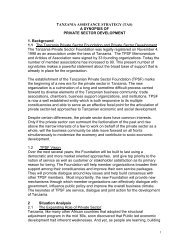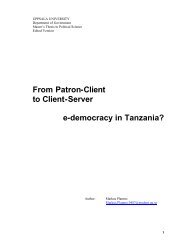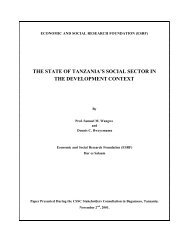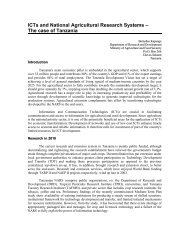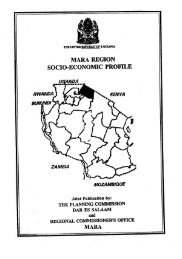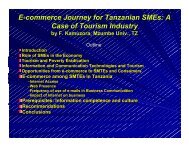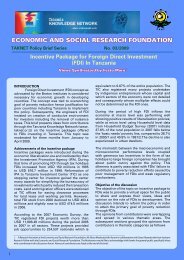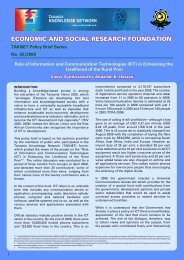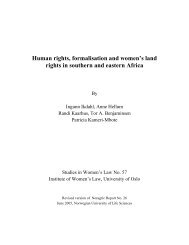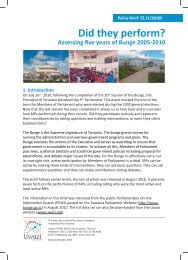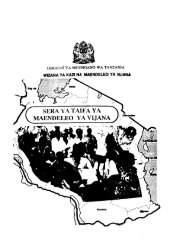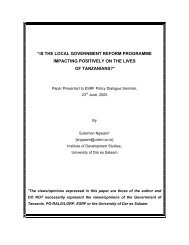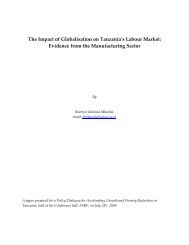Kilimanjaro - Tanzania Online Gateway
Kilimanjaro - Tanzania Online Gateway
Kilimanjaro - Tanzania Online Gateway
Create successful ePaper yourself
Turn your PDF publications into a flip-book with our unique Google optimized e-Paper software.
of grazing land, livestock keeping could still be ranked<br />
second predominant economic activity after crop farming.<br />
Households living in the highlands and intermediate zones<br />
practice modern dairy farming is under zero grazing or stall<br />
feeding whereas those in the lowlands are engaged in what<br />
may be termed as “traditional ranching”. And most of the<br />
cattle reared mider this system are mainly local zebu. The<br />
other types of livestock are evenly distributed on both<br />
zones. The number of various livestock units kept in the<br />
region in 1993/94 is as sown in Table XXII.<br />
TABLE XXII: KILIMANJARO REGION LIVESTOCK SUMMARY DATA 1993/94<br />
Livestock Category Total Household<br />
Average<br />
National<br />
Regional<br />
% on<br />
National<br />
Total<br />
Cattle 1,617,593 485,448 3.88 3.57<br />
Goats 8,641,222 490,338 5.48 6.91<br />
Sheep 2,692,716 206,904 2.96 7.68<br />
Chickens and other poultry 21,530,083 1,029,495 5.83 4.78<br />
Pigs 429,682 14,873 - 3.32<br />
Donkey 272,427 202,378 - 4.46<br />
Buffalos 13,916 2,282 - 16.40<br />
Rabbits 269,455 15,666 - 5.81<br />
Source:<br />
1. Compiled from National Sample Census of Agriculture 1993/94 Report Vol II Page<br />
42-57<br />
2. Regional Agricultural and Livestock Development Office, <strong>Kilimanjaro</strong> Region,<br />
Moshi.<br />
58



